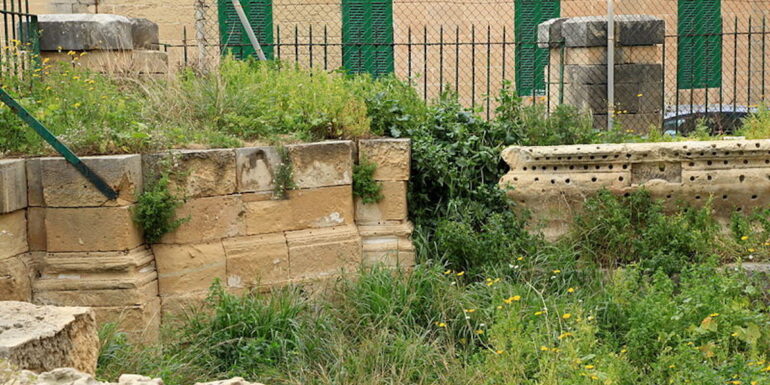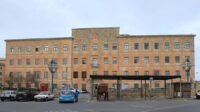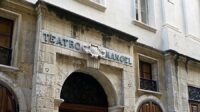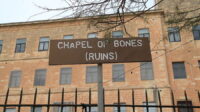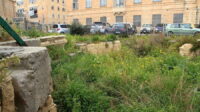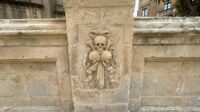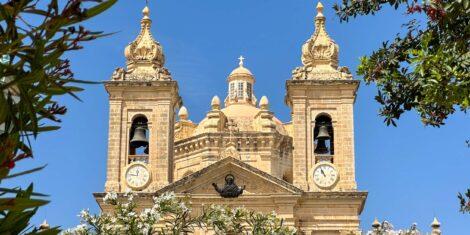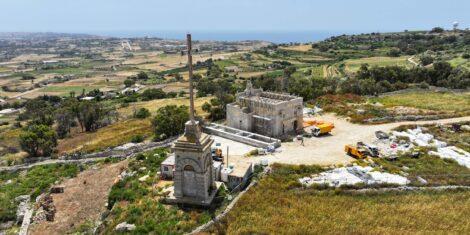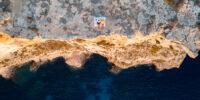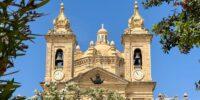Imagery of skulls and bones are very popular in countries with a catholic-history. They are not exclusive to the religion. In fact, they are a symbol that all cultures recognize and have used in some way or another. It is a stark reminder of the inevitable end of one’s life. So simultaneously it is also a reminder to enjoy one’s life and live it to the fullest. It is however, unusual to have an entire crypt decorated with them. One such example is the Nibbia Chapel in Malta.
Malta’s not lacking this sort of imagery and you can see it in many different locations around the island. But, one sticks out. Or rather, it stuck out.
Around the street called St. Elmo’s Place in Valletta, where the Evans Building now stands, was once a chapel called the Nibbia Chapel. This chapel had a very particular crypt underneath it.

Origins of the Nibbia Chapel in 1619
Originally, a knight of the Order of St. John built the chapel in 1619. In fact, the chapel was nicknamed after the knight that built it. Fra Giorgio Nibbia was the original patron of the chapel and he dedicated it to Our Lady of Mercy. At the time the chapel was typically used to bury patients who would pass away, from the nearby infirmary.
It seems that the original and most common use for the church was to celebrate masses for the souls of the dead.
Restoration in 1731
In 1730 it was demolished and rebuilt a year later with more Baroque, contemporary designs by Romano Carapecchia. Notably, Carapecchia designed around 4 churches in Valletta. He also designed the Manoel Theatre, Palazzo Spinola in St. Julian’s, the main gate of Fort Manoel.
In this process, the human remains were put in a crypt beneath the chapel.
The Redecoration in 1852
In 1852, the chaplain in charge of the infirmary, a certain Reverend Sacco, decided to decorate the chapel. He did so with the skulls and bones from the cemetery, in the tradition of other Roman Catholic ossuaries in Europe. Suddenly it became known as the Chapel of Bones. It very quickly became an attraction for both foreign visitors of the islands and locals.
In fact, in the Royal Collection Trust, in a photo album belonging to Queen Mary and George the V, you can see a great photo of what the chapel used to look like.
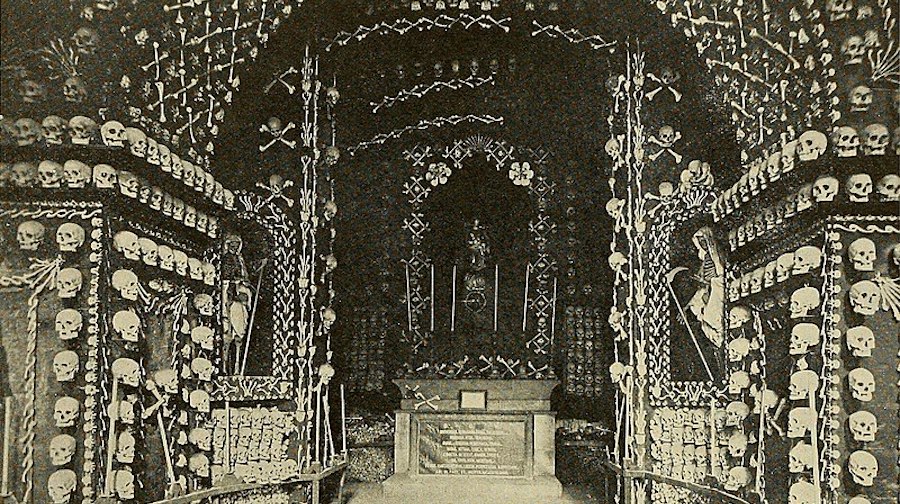
The Bombardment in 1941
Unfortunately the beautiful chapel suffered much in an Italian bombardment during the second world war. It is now merely rubble. The human remains found, were collected and transferred to the Addolorata.
Trivia and Anecdotes about Nibbia Chapel
In doing my research about the Nibbia church, I came across a 1914 book called Six and One Abroad by Sidney J. Thomas, who emphasized the artistry that went into the designing and decorating this crypt. The chapter regarding the author’s stop on the islands,bears the title ‘A Semi-Colon in the Journey’.
Thomas has a strange sense of humor in this book of his and in this specific section he literally says how he imagines the chapel will be on Resurrection Day when ‘a skill will jump off its pillar and roll around in search of the spinal column to which it once belonged’.
Nibbia Chapel Today
What is interesting though, is that the crypt itself might still be intact. After the few remains of the chapel were completely brought down in the 1970’s the exact location of the chapel became slightly blurred.
The problem is that no one knows exactly where it is, and with newer buildings in the area it is harder to trace where it might be.
